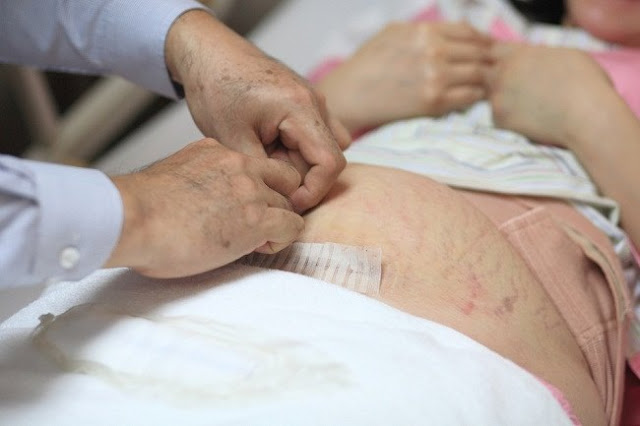Actually there has been no research that establishes exactly how many times a pregnant woman can give birth by cesarean section safely. But certainly, caesarean section is increasingly risky when done repeatedly.
Giving birth by caesarean section means removing the baby through an incision from the stomach, not from the vagina. This cutting process can produce wound tissue in the skin and uterus. Therefore, women who give birth by caesarean section may experience interference in the area if this procedure is done many times.
The Risk of Childbirth by Caesarean Operation More Than Once
One of the risks of giving birth by caesarean section is adhesion, which is adhesion of tissue due to the formation of scar tissue or scar tissue.
Adhesion can occur in various organs. But in women who have had a number of cesareans, adhesions or attachments can occur between the bladder and the uterus.
This condition can damage both organs, as well as cause pelvic pain. Not only that, sufferers can also experience urination disorders and fertility disorders.
Aside from adhesion, other risks that can occur due to having a cesarean section repeatedly are:
1. Heavy bleeding
The more frequent caesareans, the greater the risk of bleeding. In some cases, the bleeding can be so severe that the doctor may need to remove the uterus to stop the bleeding.
2. There is a problem with the placenta
Caesarean section performed repeatedly can increase the risk of problems in the placenta in subsequent pregnancies. The problem that can occur in the placenta is that the placenta grows too deep near the caesarean scar on the uterine wall (placenta accreta) or the placenta covers the baby's birth canal (placenta previa).
3. Respiratory disorders in infants
This problem is quite common after babies born by cesarean section, especially if born before 39 weeks of age. The risk of the baby having respiratory problems will be greater if the mother had undergone a caesarean procedure before.
In addition, the anesthetics used during cesarean section can also make babies born with certain disorders and low Apgar values.
4. Infection after surgery
Caesarean section is a major surgery that is risky. One risk that can occur after undergoing this surgery is an infection in the surgical wound. This needs to get treatment from a doctor so that it does not get worse.
In essence, if you have given birth by cesarean section, then the second procedure and so on will be more complicated and can take longer.
You are also usually not recommended to give birth normally after having a history of having caesarean section twice or more, because in these conditions, the risk of uterine damage is quite high.
Actually you have the right to choose whether you want to undergo any type of childbirth method. However, the doctor will suggest the best method of delivery based on your health condition and that of your baby.
If you are medically in condition or the baby in the womb is not possible to give birth normally, such as the size of the baby is too large, the placenta covers the cervix, the baby is suffering from genetic disorders, breech baby position, pregnant twins, or if you suffer from heart disease or sexually transmitted diseases , doctors will still recommend a cesarean section.
Therefore, check the womb regularly to the obstetrician. In addition to checking your condition and Little One, routine obstetric examination will also help the doctor to determine the right type of labor for you.



Comments
Post a Comment